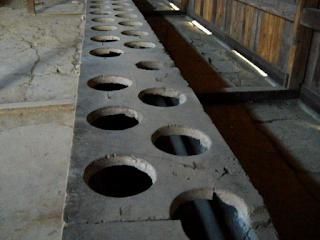“It’s the same to Jews as is to Americans to study the revolutionary war and its heroes right? People put their chest in front of English muskets to build a country, we put our chest in front of German muskets to defend ourselves from annihilation and maybe to prevent the deaths of other Jews.”
—Simon Trakinski
 Simon Trakinski fought the Germans during the Vilna Ghetto uprising, escaping afterwards to fight in the all-Jewish Markov partisan brigade. Simon and his brother Bill also worked as spies and saboteurs, gathering information about troop and supply movements, mining roads, and blowing up bridges.
Simon Trakinski fought the Germans during the Vilna Ghetto uprising, escaping afterwards to fight in the all-Jewish Markov partisan brigade. Simon and his brother Bill also worked as spies and saboteurs, gathering information about troop and supply movements, mining roads, and blowing up bridges.
On this July 4th, Simon’s story reminds us that the fight for liberty can take many forms, including espionage, escape, and simply surviving another day. Simon’s story also points out that resistors, revolutionaries and rebels have to deal with unexpected adversaries — including rival partisan groups who, in theory, should have been their allies.
- Simon’s group sometimes fought partisan groups from different countries for control of territory that would be divided up after the war
- The Markov brigade and other Jewish partisans often had to fight antisemitic soldiers who – like the Germans they fought – also saw the war as an opportunity to exterminate Jews
- After the Holocaust, surviving Jews still faced violence from murderously antisemitic locals
- Western countries including the United States set quotas, refusing to help many Jews escape both the continued violence and new forms of anti-Jewish oppression as the Soviet “Iron Curtain” descended on Eastern Europe.
 This time, Simon resisted by escaping through Poland to Austria, finally being allowed to immigrate to the United States in 1948. Simon Trakinski passed away on January 2, 2009 surrounded by his loving family at his home in New York.
This time, Simon resisted by escaping through Poland to Austria, finally being allowed to immigrate to the United States in 1948. Simon Trakinski passed away on January 2, 2009 surrounded by his loving family at his home in New York.
You can read Simon’s full bio and see him tell more of his story by going to www.jewishpartisans.org/simontbio. (The quote above is from the video titled "Fighting to prevent annihilation", which can be found on his videos page.)







































